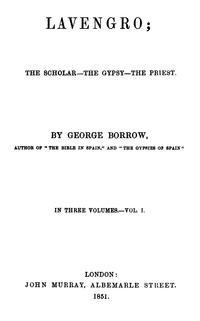#Lavengro
Lavengro
Lavengro: The Scholar, the Gypsy, the Priest (1851) is a work by George Borrow, falling somewhere between the genres of memoir and novel, which has long been considered a classic of 19th-century English literature. According to the author lav-engro
Read More..
Ratings
Likes
Reviews
Popularity
Ranks
This #hashtag is not ranked yet.

